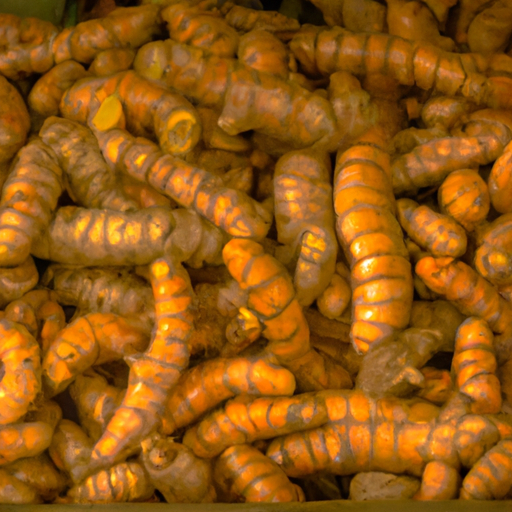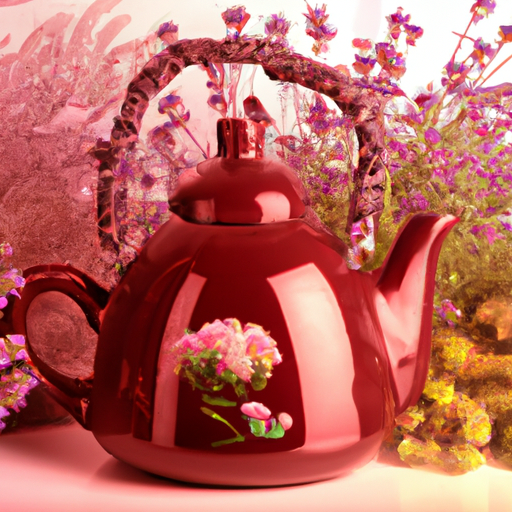When I first began using turmeric in my cooking, I was unfamiliar with its appearance in stores. Despite hearing about its health benefits and presence in Indian and Middle Eastern cuisine, I was unsure of what to search for while browsing the shelves.
After some trial and error, I learned that turmeric can come in various forms and colors, and that selecting and storing it properly can make a big difference in its flavor and potency.
In this article, I’ll share my experience with buying and using turmeric, and provide some tips on how to find the best quality and freshness in the store. Whether you’re a seasoned cook or a curious beginner, learning about this vibrant spice can add depth and flavor to your dishes, and enhance your overall health and well-being.
So let’s take a closer look at what turmeric looks like in the store, and how to make the most of its benefits in your cooking.
Key Takeaways
- Turmeric powder is the most common form of turmeric found in stores.
- Fresh turmeric has a more intense flavor and aroma than powder.
- When selecting turmeric, look for firm, plump roots with vibrant orange-yellow color and fresh, earthy aroma.
- Organic turmeric is grown without synthetic pesticides, fertilizers, or GMOs.
Forms of Turmeric Available in Stores
You’ll find a variety of forms of turmeric in stores, including ground, fresh, and even supplements! Turmeric powder, also known as ground turmeric, is the most common form of turmeric available in stores. It’s made by grinding the dried root of the turmeric plant into a fine powder.
Turmeric powder is commonly used in cooking and is a popular spice in Indian, Middle Eastern, and Southeast Asian cuisines. It’s also used as a natural food coloring and as a natural remedy for various health conditions.
Fresh turmeric, on the other hand, is the root of the turmeric plant that has not been dried or ground into a powder. Fresh turmeric has a more intense flavor and aroma than turmeric powder and is also more expensive. It’s often used in juicing, smoothies, and in cooking, especially in Southeast Asian cuisines.
When purchasing turmeric, you may also have the option of buying organic or non-organic turmeric. Organic turmeric is grown without the use of synthetic pesticides, fertilizers, or genetically modified organisms, whereas non-organic turmeric may be exposed to these chemicals.
When selecting and storing turmeric, there are a few things to keep in mind.
Tips for Selecting and Storing Turmeric
When selecting turmeric, it’s important to choose firm, plump roots with a vibrant orange-yellow color and a fresh, earthy aroma. This ensures that you’re getting the most potent and flavorful turmeric possible.
Turmeric has long been prized for its medicinal properties and is known to have anti-inflammatory and antioxidant effects. In fact, turmeric health benefits have been extensively studied and it’s been found to potentially improve brain function, lower the risk of heart disease, and even combat cancer.
If you’re not able to find fresh turmeric in your local grocery store, don’t worry. Turmeric supplements are widely available and can be a convenient way to incorporate this superfood into your diet. However, it’s important to choose high-quality supplements from reputable brands to ensure you’re getting the full benefits of turmeric.
Now, let’s move on to ways to use turmeric in cooking.
Ways to Use Turmeric in Cooking
Spice up your culinary creations by adding a pinch of vibrant orange-yellow turmeric, creating a warm and earthy flavor profile. Turmeric is a versatile spice that can be used in a variety of dishes, from soups and stews to marinades and dressings. Not only does it add a unique flavor, but it also has several health benefits, including anti-inflammatory properties and aiding in digestion.
But turmeric isn’t just limited to the kitchen. It also has benefits in skincare and can be used as a natural dye for fabrics. When used in skincare, turmeric can help with acne, dark spots, and inflammation. As a natural dye, it produces a beautiful golden yellow color that can be used on fabrics such as cotton and silk. So, next time you’re looking to add some color and flavor to your life, consider incorporating turmeric into your culinary creations, skincare routine, or DIY fabric projects.
| Ways to Use Turmeric | Benefits | |||
|---|---|---|---|---|
| In curries and stews | Anti-inflammatory properties | |||
| As a marinade or rub for chicken or fish | Aids in digestion | |||
| In salad dressings | Helps with acne and dark spots in skincare | |||
| As a natural dye for fabrics | Produces a beautiful golden yellow color on cotton and silk | In traditional medicine | Turmeric has been used to treat a variety of ailments such as arthritis, liver disease, and even cancer |
Frequently Asked Questions
What are the health benefits of consuming turmeric?
As someone who regularly consumes turmeric, I can attest to its amazing anti-inflammatory properties and antioxidant effects. Its golden hue and distinct aroma are just bonuses to its numerous health benefits.
What is the history of turmeric and how has it been used in traditional medicine?
Turmeric has a rich history in Ayurvedic and Chinese medicine. Its therapeutic properties have been extensively researched in modern medicine, with applications ranging from anti-inflammatory to anti-cancer.
Can turmeric be used for skincare or beauty purposes?
Yes, turmeric can be used for skincare and beauty purposes. Its anti-inflammatory and antioxidant properties help reduce acne, dark spots, and wrinkles. Turmeric skincare and beauty products like masks and creams are available in stores.
Are there any precautions or side effects to consider when using turmeric?
When using turmeric for skincare or beauty purposes, it’s important to take precautions. Start with a small dosage and gradually increase. Be cautious when using turmeric supplements and be aware of potential interactions with medications.
What is the difference between turmeric and other similar spices like ginger and cumin?
Turmeric and ginger are both roots with anti-inflammatory properties, but turmeric has a more distinct flavor and color. Cumin, on the other hand, is a seed with a smoky taste. Turmeric can be used in curries, soups, and even smoothies. Try my favorite turmeric latte recipe for a cozy drink.
Conclusion
After learning about the various forms of turmeric available in stores and the best ways to select and store it, I’m excited to start incorporating this versatile spice into my cooking.
From adding it to rice for a vibrant yellow color to using it in marinades and sauces for a depth of flavor, turmeric has endless possibilities.
But besides its culinary uses, I’ve also learned about the potential health benefits of turmeric, such as its anti-inflammatory properties and potential ability to improve brain function.
So next time you’re in the store and come across this vibrant spice, don’t hesitate to pick some up and experiment with it in the kitchen.
Who knows, you may just discover a new favorite ingredient.
How will you use turmeric in your next meal?










